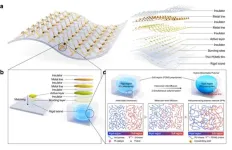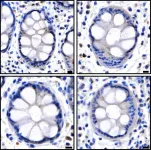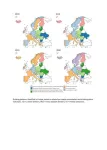(Press-News.org) □ Professor Jin-ho Chang’s research team from the Department of Electrical Engineering and Computer Science at DGIST (President Kun-woo Lee) developed “Ultrasound-assisted photothermal therapy (ULTRA-PTT)” technology that significantly enhances the performance of conventional photothermal therapy. This technology was developed in collaboration with Senior Researcher Hye-min Kim from the Advanced Photonics Research Institute at GIST (President Ki-chul Lim) using the team’s proprietary “ultrasound-induced optical clearing” technology.
□ Phototherapy, using light, is widely used in clinical settings for skin tightening, laser tattoo removal, and laser cancer therapy, since it can selectively improve or destroy targeted lesions. However, as light travels through biological tissues, optical scattering occurs, causing distortion of the light path and limiting the depth of light penetration. Against this backdrop, a fundamental problem of limited depth in light-based treatments arises.
□ The penetration depth of light is proportional to the laser wavelength. Therefore, in clinical settings, near-infrared lasers (800-1,000nm) are used to increase light penetration depth for therapy. However, upon investigation for medical treatments, near-infrared lasers are highly absorbed by water-rich substances. The human body is composed of about 60% water, which can lead to significant energy absorption by the epidermis, resulting in side effects such as burns. Moreover, the inability to utilize wavelengths optimized for each specific disease treatment leads to increased treatment frequency and costs.
□ To address these issues, many researchers are conducting various studies, but the majority are focusing on developing “photothermal agents[1]” that effectively absorb near-infrared laser wavelengths targeted at lesions. In contrast, research progress on methods to reduce optical scattering itself remains limited.
□ Against this backdrop, Professor Chang’s team has been conducting ongoing research since 2017 to reduce optical scattering itself. They utilize air bubbles within biological tissues via ultrasound to effectively overcome limitations of light penetration depth. As a result, they developed the “ultrasound-induced optical clearing” technology, which minimizes optical scattering using a temporarily created layer of air bubbles. They applied this technology to a confocal fluorescence microscope, confirming that it enables imaging depths over six times greater than conventional methods. Their findings were published in the journal “Nature Photonics” in 2022.
□ Following this, the team developed “Ultrasound-assisted photothermal therapy (ULTRA-PTT)” by applying “ultrasound-induced optical clearing” technology to photothermal therapy. They created a medical device called the “handpiece[2]” based on this technology. The “ULTRA-PTT handpiece” is designed for easy handling and comprises four components: the main body for user grip, the ultrasound generation unit that creates and maintains air bubbles within biological tissues, the laser irradiation unit that delivers light through a doughnut-shaped central hole on the main body, and the housing unit containing a medium for transmitting ultrasound to biological tissues.
□ To verify the therapeutic efficacy of this technology, the team assessed the potential clinical application of the “ULTRA-PTT handpiece” by using it on mice with melanoma, a type of skin cancer, for about eight days. Conventional photothermal therapy displayed a reduction in tumor size for the first two days, but subsequently, tumor regrowth often occurs, leading to diminished treatment efficacy. However, the therapy with the “ULTRA-PTT handpiece” continuously reduced tumor size, leading to complete elimination after eight days. Furthermore, through histological analysis, the team confirmed that air bubbles generated by ultrasound energy do not cause damage to biological tissues, and it was demonstrated that tissues return to their pre-treatment state, proving the safety of the method for human application.
□ Professor Chang of DGIST stated, “This research allowed us to apply and expand the ‘ultrasound-induced optical clearing’ technology, which our team developed, to light-based therapy devices. Especially, the ‘ULTRA-PTT handpiece’ demonstrates excellent therapeutic performance in animal experiments, and proved its safety and efficacy through histological analysis, showing the potential for commercialization of domestically developed proprietary technology.”
□ This research was funded by the Mid-career Research Program of the National Research Foundation of Korea, and the findings of the study were published in Advanced Optical Materials (Impact Factor=9.0), one of the most renowned international journals in the field of optical science.
- Corresponding Author E-mail Address : jhchang@dgist.ac.kr
[1]Photothermal agent plays a crucial role in conventional photothermal therapy by absorbing light and converting it into thermal energy. It contributes to enhancing the therapeutic efficacy of photothermal treatment.
[2]Handpiece: a medical device operated with a motor, which comes in various shapes such as straight, contra-angle, and acute-angle.
END
A new paradigm in photothermal therapy! DGIST developed “ultrasound-assisted photothermal therapy (ULTRA-PTT)” technology!
2024-06-25
ELSE PRESS RELEASES FROM THIS DATE:
Nanowires create elite warriors to enhance T cell therapy
2024-06-25
Adoptive T-cell therapy has revolutionized medicine. A patient’s T-cells — a type of white blood cell that is part of the body’s immune system — are extracted and modified in a lab and then infused back into the body, to seek and destroy infection, or cancer cells.
Now Georgia Tech bioengineer Ankur Singh and his research team have developed a method to improve this pioneering immunotherapy.
Their solution involves using nanowires to deliver therapeutic ...
Plant-sourced nitrate proves positive to human health
2024-06-25
Plant-sourced nitrate proves positive to human health
New research from Edith Cowan University (ECU) has found that nitrate from plant sources is associated with a lower risk of mortality while nitrate from other sources such as animal-based foods, processed meat and tap water, is linked to a higher risk of mortality.
Nitrate, a compound found in vegetables, meat, and drinking water, has been the subject of debate due to its potential impact on health. Emerging evidence suggests that dietary nitrate may play a role in preventing cardiovascular disease (CVD), dementia, and ...
DGIST-POSTECH joint research team developed next-generation impact-resistant stretchable electronic component
2024-06-25
□ Professor Kyung-In Jang’s research team from the Department of Robotics and Mechatronics Engineering at DGIST (President Kunwoo Lee) has succeeded in developing a highly stable stretchable electronic device, which overcomes the mechanical limitations of conventional inorganic materials and enhances their stretchability and durability. In collaboration with Professor Taeho Park’s team from the Department of Chemical Engineering at POSTECH (President Seong-Keun Kim), the research team has developed a stretchable hybrid polymer and applied it to electronic devices, enabling them to operate stably even under deformation ...
Robots help put brakes on inflammatory diseases
2024-06-25
Fully automated diagnostic techniques, including liquid handling robots, are poised to improve the lives of millions of people living with inflammatory diseases worldwide.
A landmark WEHI study has revealed new methods in detecting necroptosis, a key factor in many inflammatory diseases like psoriasis, arthritis and inflammatory bowel disease.
The findings mark a huge leap forward in our ability to diagnose necroptosis accurately. They also offer practical methods that can be easily reproduced in hospitals worldwide, giving hope for new ways to treat inflammatory diseases.
At a glance
Necroptosis is a form of cell death, one of the body’s natural ...
Chronic loneliness may increase stroke risk among older adults
2024-06-25
Embargoed for release: Monday, June 24, 7:30 PM ET
Key points:
In a study of loneliness and stroke risk over time among adults ages 50+, those who experienced chronic loneliness had a 56% higher risk of stroke than those who consistently reported not being lonely.
Those who experienced situational loneliness did not have an elevated risk of stroke—suggesting that the impact of loneliness on stroke risk occurs over the longer term.
Boston, MA—Chronic loneliness may significantly raise older adults’ risk of stroke, according to a new study led by Harvard T.H. Chan School of Public Health.
“Loneliness is increasingly considered a ...
Risk of Parkinson’s more than double for people with anxiety
2024-06-25
The risk of developing Parkinson’s is at least twice as high in people with anxiety compared to those without, finds a new study by UCL researchers.
The research, published in the British Journal of General Practice, investigated whether there was a link between people over the age of 50 who had recently developed anxiety and a later diagnosis of Parkinson’s.
The team used UK primary care data between 2008 and 2018 and assessed 109,435 patients who had developed anxiety after the age of 50 and compared them to 878,256 matched ...
European countries differ in their drinking styles – what is yours?
2024-06-25
A new study of drinking patterns across Europe from 2000 to 2019 shows that drinking occurs in stable, beverage-specific clusters that seem to be partly determined by geography. The study was published today by the scientific journal Addiction.
The study identified six drinking patterns in Europe in 2019:
Wine-drinking countries: France, Greece, Italy, Portugal, and Sweden. Characterized by the highest consumption of wine, lowest consumption of beer and spirits, and lowest overall alcohol consumption.
High beer/low spirit drinking ...
Children born underweight are at increased risk of disease if they develop obesity
2024-06-25
Scientists at the University of Copenhagen discover a link between birthweight and the risk of health complications from obesity during childhood. The findings highlight the need for prevention and treatment approaches for children with obesity who were born with a lower birth weight.
Hundreds of millions of people live with obesity, which is normally measured as a higher-than-optimal body mass index (BMI). While an elevated BMI increases the risk of a range of cardiometabolic diseases and is responsible for around five million deaths a year according to the World Health Organization, not everyone is equally at risk.
Scientists at the ...
New research questions safety of cannabidiol for pregnant women
2024-06-25
Vienna, Austria: Cannabidiol (CBD), one of the active ingredients in cannabis, is thought to be safe as it does not cause a “high”. Increasing numbers of pregnant women take CBD, believing that it can help alleviate symptoms such as morning sickness, insomnia, anxiety and pain.
However, research presented today (Tuesday) at the Federation of European Neuroscience Societies (FENS) Forum 2024 [1,2], suggests that it may affect offspring. Two studies in mice have shown that gestational exposure to CBD alters the behaviour of offspring and also affects the nerve cells (neurons) in the insular cortex (IC) ...
Scientists can now detect antibiotics in your fingerprints – aiding the fight against drug-resistant TB
2024-06-25
A fingerprint may soon be all a doctor needs to check whether tuberculosis patients are taking their antibiotics – thanks to a new study led by the University of Surrey.
Scientists successfully detected the drugs in finger sweat – and with almost the same accuracy as a blood test.
Professor Melanie Bailey, an analytical chemist and co-author of the study from the University of Surrey, said:
“Up until now, blood tests have been the gold standard for detecting drugs in somebody’s ...




